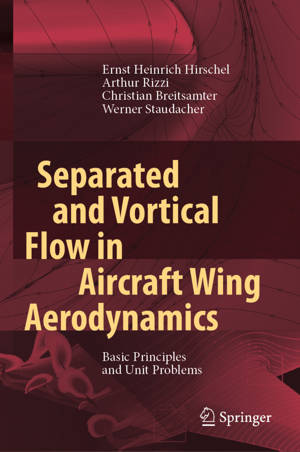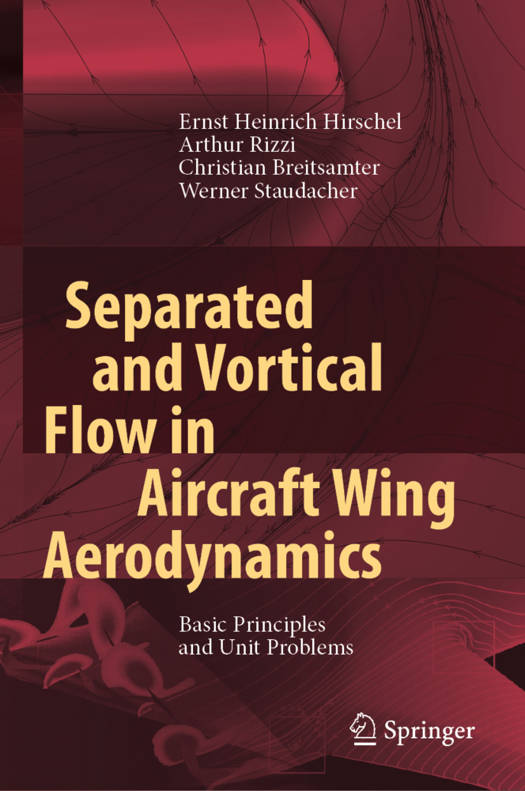
- Retrait gratuit dans votre magasin Club
- 7.000.000 titres dans notre catalogue
- Payer en toute sécurité
- Toujours un magasin près de chez vous
- Retrait gratuit dans votre magasin Club
- 7.000.0000 titres dans notre catalogue
- Payer en toute sécurité
- Toujours un magasin près de chez vous
Separated and Vortical Flow in Aircraft Wing Aerodynamics
Basic Principles and Unit Problems
Ernst Heinrich Hirschel, Arthur Rizzi, Christian Breitsamter, Werner StaudacherDescription
Fluid mechanical aspects of separated and vortical flow in aircraft wing aerodynamics are treated. The focus is on two wing classes: (1) large aspect-ratio wings and (2) small aspect-ratio delta-type wings. Aerodynamic design issues in general are not dealt with.
Discrete numerical simulation methods play a progressively larger role in aircraft design and development. Accordingly, in the introduction to the book the different mathematical models are considered, which underlie the aerodynamic computation methods (panel methods, RANS and scale-resolving methods). Special methods are the Euler methods, which as rather inexpensive methods embrace compressibility effects and also permit to describe lifting-wing flow.
Three main topics are treated:
1) Basic Principles are considered first: boundary-layer flow, vortex theory, the vorticity content of shear layers, Euler solutions for lifting wings, the Kutta condition in reality and the topology of skin-friction and velocity fields.
2) Unit Problems treat isolated flow phenomena of the two wing classes. Capabilities of panel and Euler methods are investigated. One Unit Problem is the flow past the wing of the NASA Common Research Model. Other Unit Problems concern the lee-side vortex system appearing at the Vortex-Flow Experiment 1 and 2 sharp- and blunt-edged delta configurations, at a delta wing with partly round leading edges, and also at the Blunt Delta Wing at hypersonic speed.
3) Selected Flow Problems of the two wing classes. In short sections practical design problems are discussed. The treatment of flow past fuselages, although desirable, was not possible in the frame of this book.Spécifications
Parties prenantes
- Auteur(s) :
- Editeur:
Contenu
- Nombre de pages :
- 456
- Langue:
- Anglais
Caractéristiques
- EAN:
- 9783662613269
- Date de parution :
- 05-10-20
- Format:
- Livre relié
- Format numérique:
- Genaaid
- Dimensions :
- 156 mm x 234 mm
- Poids :
- 834 g

Les avis
Nous publions uniquement les avis qui respectent les conditions requises. Consultez nos conditions pour les avis.






